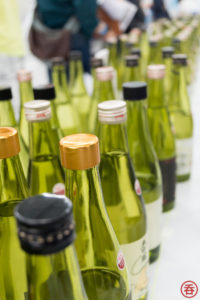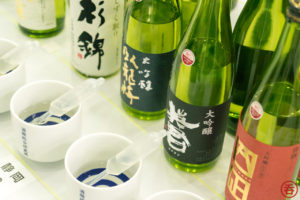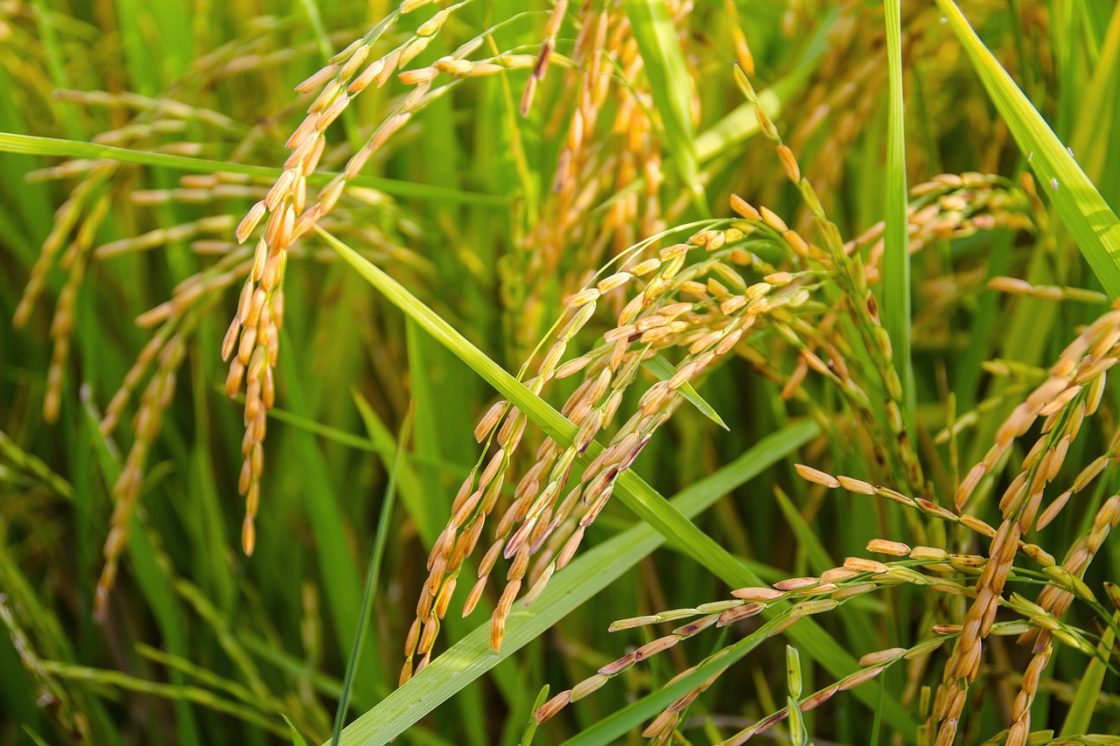Welcome back to the second in this five-part overview of nihonshu! There’s still plenty I want to cover – much as I would love to say that sake is simple, it isn’t. (Even if you speak/read Japanese.) But that doesn’t mean that it has to be difficult to start exploring.
Often, all you need are a few reference points to orient yourself. Once you have your bearings, being lost turns into discovery. And although they’re not infallible, my first points of reference for sake are the legal classifications.
Tokutei Meisho
The tokutei meisho (特定名称) are legally defined terms that a sake can use only if it meets a list of requirements. They focus on how heavily the rice is milled (or polished) and brewing speed and temperature (which are linked). The milling ratio number is confusing – it tells you how much is left, not how much was taken away. I’ll phrase it as “milled (down) to” to try to make it clear.
 Why mill the rice? There are a few sake out there made with unmilled or very lightly milled rice, and if you can get hold of one you’ll see that the flavour is brash, fierce and overall a bit of an acquired taste. The outer layers of the rice grain are full of fats and proteins, which contribute a set of aromas and flavours that sake brewers generally don’t want too much of. The more highly polished the rice, the greater the proportion of carbohydrate to be turned into sugar by yeast, which produces fruity flavour compounds alongside alcohol, and the fewer proteins to contribute that wonderful savoury umami.
Why mill the rice? There are a few sake out there made with unmilled or very lightly milled rice, and if you can get hold of one you’ll see that the flavour is brash, fierce and overall a bit of an acquired taste. The outer layers of the rice grain are full of fats and proteins, which contribute a set of aromas and flavours that sake brewers generally don’t want too much of. The more highly polished the rice, the greater the proportion of carbohydrate to be turned into sugar by yeast, which produces fruity flavour compounds alongside alcohol, and the fewer proteins to contribute that wonderful savoury umami.
To qualify for any classification, sake can be made from only water, plain steamed rice, steamed rice inoculated with koji, yeast and (optionally) a very small amount of distilled alcohol. No flavourings, preservatives or other additives are allowed.
Legal classifications (4 of total 8)
| Daiginjo | 大吟醸 | Rice milled down to at least 50% of original weight
Cool, slow brewing |
| Ginjo | 吟醸 | Rice milled down to at least 60% of original weight
Cool, slow brewing |
| Tokubetsu honjozo | 特別本醸造 | Rice milled down to at least 70% of original weight
Something “special” e.g. milled to 60% or less, made from a rice variety developed for sake production |
| Honjozo | 本醸造 | Rice milled down to at least 70% of original weight |
(For anyone who’s about to tell me I’ve left out junmai, I’ll come back to that.)
These legal classifications came into force in 1990, and only around 15% of sake produced in Japan today qualifies for a classification. The awkward tokutei meisho is often turned into “premium” in English to simplify matters, and it’s not too far from the mark.
The classifications are often presented as a pyramid, with daiginjo at the top, which makes sense if you focus on milling ratio. This format comes with some implications about quality, however, which I don’t agree with. I think it’s more accurate to present the legal classifications as a spectrum of aromas and flavours that range from light, floral and fruity at one end to full, sweet and savoury at the other.

They even line up in alphabetical order, which makes it easier to remember the sequence. (I can’t take any credit for that.)
Ginjo and daiginjo were originally produced only for competition, as the amount of milling involved was prohibitively expensive. The characters translate literally as “song of the brewery” (吟醸) and “great song of the brewery” (大吟醸). But as milling technology evolved, it later became viable to produce them on a commercial scale.
Honjozo (本醸造) translates literally as “main brewing method”, which reflects its status as the base that ginjo and daiginjo developed from.
It’s MillING time
 The pyramid shape also suggests things about price, and there is some basis for that. Milling rice to 70% of its original weight for honjozo takes 10 hours. Milling to 50% for daiginjo not only takes 45 hours but also removes half of one of its main raw ingredients, which increases costs. (The shavings are used for a number of purposes, including animal feed, rice crackers and rice flour.) So as a rule it takes more time, effort and raw material, and therefore costs more, to make the more delicate and highly milled classes.
The pyramid shape also suggests things about price, and there is some basis for that. Milling rice to 70% of its original weight for honjozo takes 10 hours. Milling to 50% for daiginjo not only takes 45 hours but also removes half of one of its main raw ingredients, which increases costs. (The shavings are used for a number of purposes, including animal feed, rice crackers and rice flour.) So as a rule it takes more time, effort and raw material, and therefore costs more, to make the more delicate and highly milled classes.
On the other hand, milling ratio isn’t all there is to a sake, and some brewers struggle with preconceived ideas of what you can charge for which grade. It’s not uncommon to see a sake that chooses a classification below one it qualifies for, for example a sake milled to 50% that’s called a ginjo instead of a daiginjo because that’s what the brewer wants to call it. Some brewers don’t put a classification on the label at all, even if the sake qualifies, instead inviting the drinker to assess it on its own merits.
As sake expert John Gauntner says, any so-called rule in sake will be outnumbered by exceptions. So keep that in mind.
What about the 85% of sake that doesn’t qualify for a classification? It’s known as futsushu (普通酒), “ordinary” or table sake. While some brewers produce amazing sake that falls outside of the classifications for one reason or another, most of the futsushu you’ll come across – especially if it’s much cheaper than a sake with a classification or the only choice on the menu in a generic Asian restaurant – is mass produced and the brewer is allowed to add sweeteners, amino acids and acidifiers to improve taste.
So, there are your guideposts: daiginjo, ginjo and honjozo for premium sake. There’s one more that’s useful to add before you start exploring, so the next article will be all about junmai.
If you have any questions or comments, please leave them below!

Based in Zurich, Switzerland, Arline is a professional Japanese to English translator and founder of taste-translation.com. She holds a trio of sake certifications: Wine and Spirits Educational Trust (WSET) Level 3 Award in Sake, Sake Service Institute International Kikizake-shi, and Sake Educational Council Certified Sake Professional.

